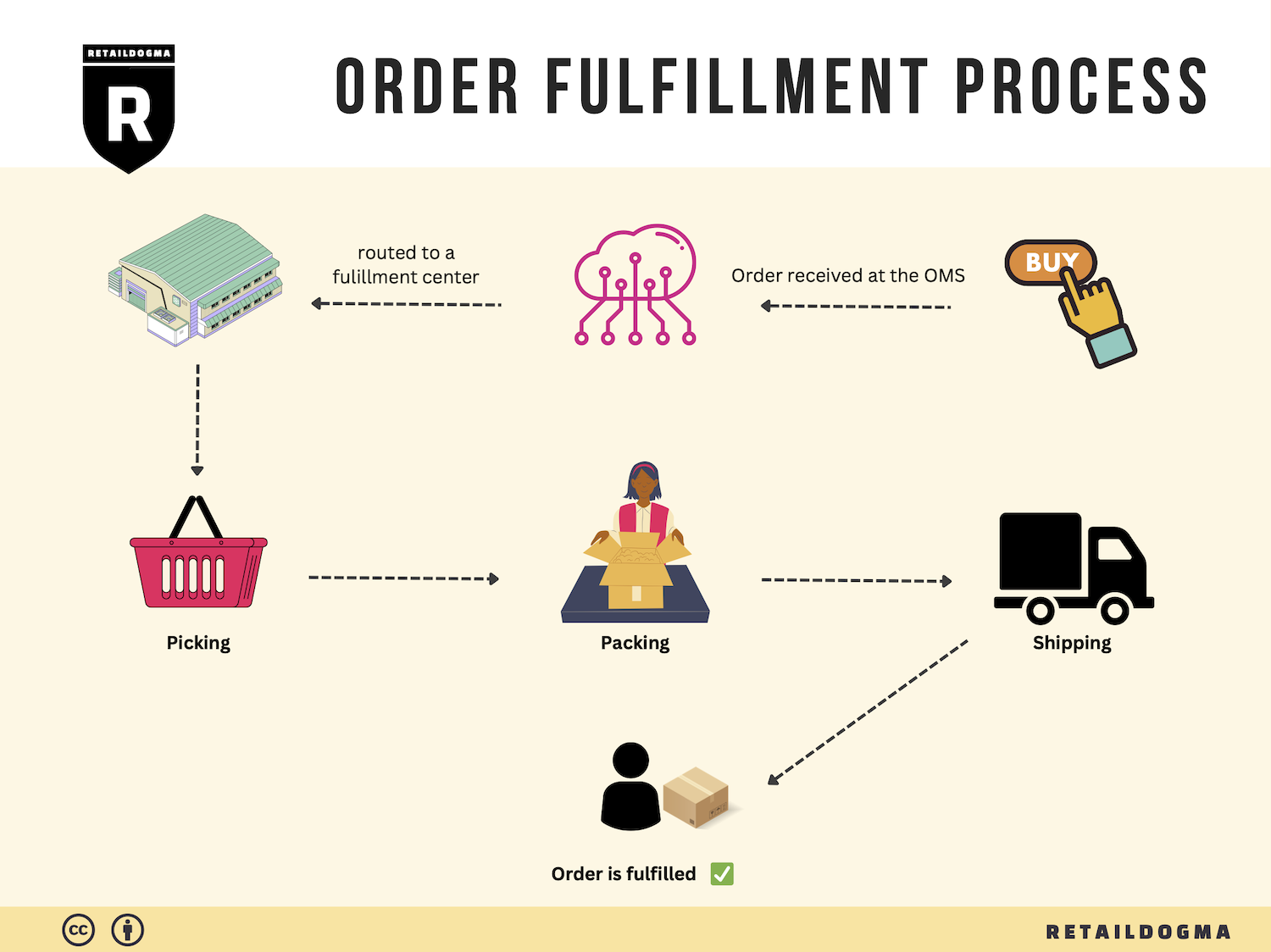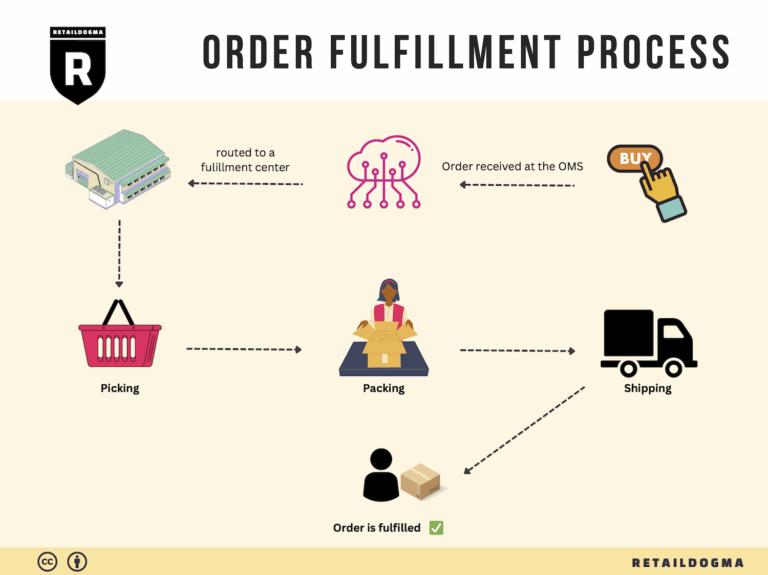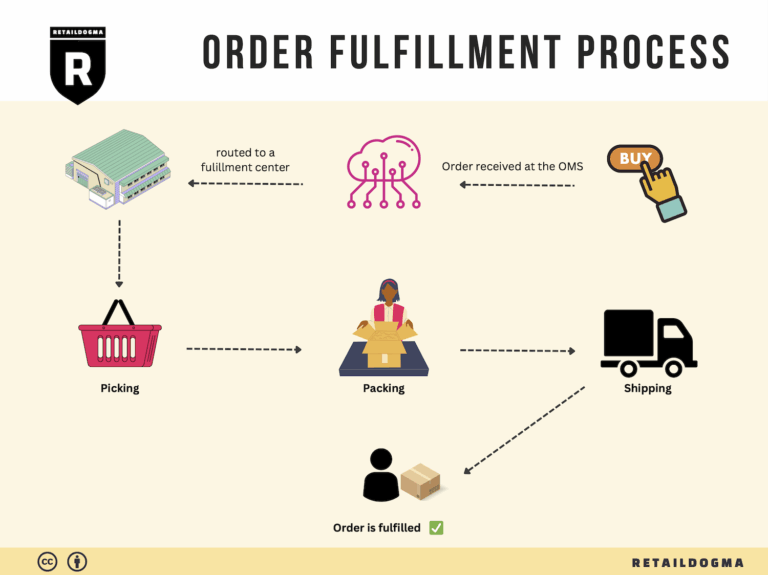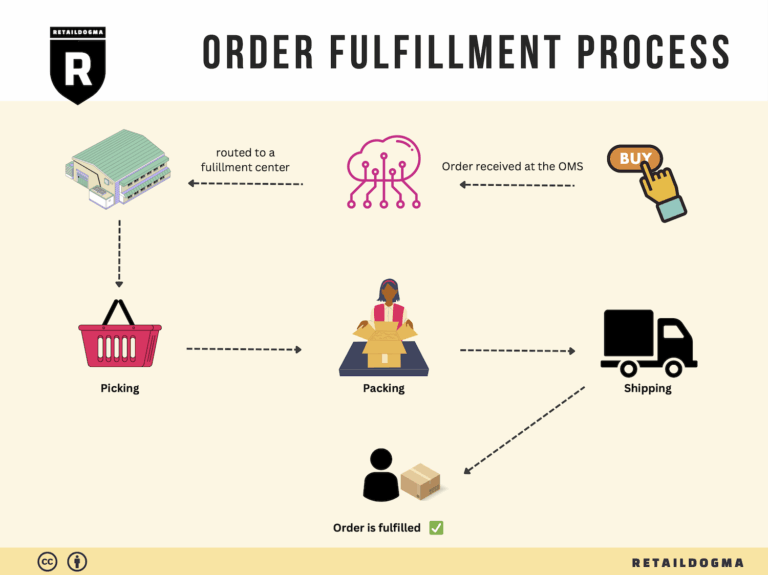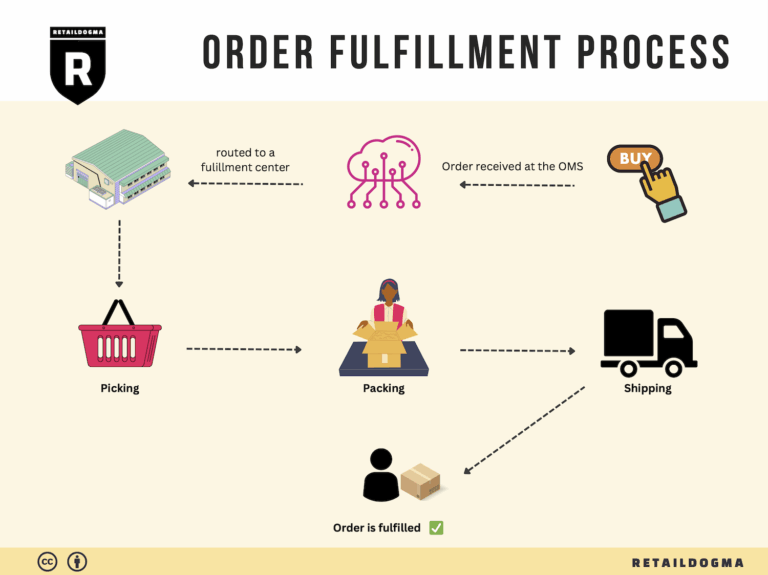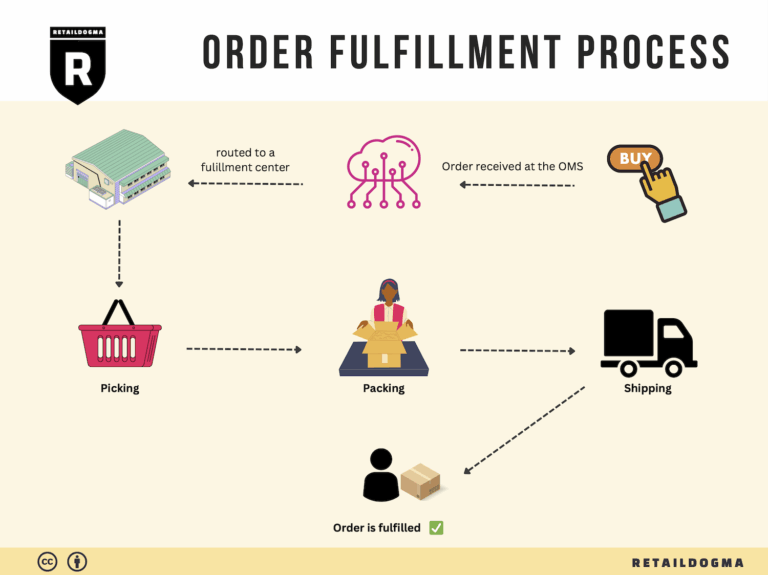How Order Fulfillment Works: A Step-by-Step Guide for Businesses
What is E-commerce Fulfillment? An Introduction for Growing Businesses
Understanding the Challenges of Order Fulfillment
As an e-commerce business owner, you may find yourself grappling with one of the most daunting challenges of scaling: the overwhelming task of packing and shipping orders. When your sales begin to rise, the logistics of fulfilling those orders can quickly become a bottleneck, diverting your attention from strategic growth initiatives to mundane operational tasks. This is where e-commerce fulfillment comes into play.
Defining E-commerce Fulfillment
At its core, e-commerce fulfillment is the entire process of getting a product from your inventory to your customer’s doorstep. This encompasses everything from receiving an order and picking the right items from your stock, to packaging them securely and arranging for their shipment. Effective fulfillment is essential for maintaining customer satisfaction and ensuring repeat business, as delays or errors in this process can lead to negative experiences and lost sales.
What This Guide Will Cover
In this comprehensive guide, we will delve into the various fulfillment models available to growing businesses, including third-party logistics (3PL) and Fulfillment by Amazon (FBA). Each model has its unique advantages and challenges, and understanding these can help you make informed decisions about your logistics strategy.
We will also explore the core services that fulfillment partners typically offer, such as inventory storage, order processing, and shipping logistics. These services can significantly streamline your operations, allowing you to focus on scaling your business rather than getting bogged down in day-to-day logistics.
Furthermore, choosing the right fulfillment partner is crucial for your business’s success. We’ll provide insights on how to evaluate potential partners based on their capabilities, location, and pricing structures. Understanding the cost implications of different fulfillment options is also vital, as it can directly affect your profit margins.
Empowering Smart Decisions
Ultimately, the goal of this guide is to empower you to make smart, strategic decisions about your logistics and fulfillment processes. By leveraging the right fulfillment solutions, you can enhance operational efficiency, improve customer satisfaction, and free up valuable time and resources to focus on growing your business. As you navigate the complexities of e-commerce fulfillment, remember that a well-chosen partner can be a game-changer, helping you scale smoothly and effectively in today’s competitive market.
What You’ll Learn In This Guide
- What is E-commerce Fulfillment? An Introduction for Growing Businesses
- The Order Fulfillment Process: From ‘Buy’ Button to Customer’s Door
- Comparing Fulfillment Models: In-House vs. 3PL vs. Dropshipping
- A Deep Dive into Amazon FBA: Pros, Cons, and Who It’s For
- Core Services Offered by Fulfillment Centers
- How to Choose a Fulfillment Partner: A 6-Point Checklist
- Understanding Fulfillment Pricing: A Breakdown of Common Fees
- Frequently Asked Questions (FAQs) about Fulfillment
- Conclusion: Is Outsourcing Fulfillment the Right Move for Your Business?
- Important Disclaimer
The Order Fulfillment Process: From ‘Buy’ Button to Customer’s Door
1. Receiving Inventory
The first step in the order fulfillment process is receiving inventory. When goods arrive at the fulfillment center, they are checked against purchase orders to ensure that the correct items and quantities have been delivered. This process involves scanning items using Stock Keeping Units (SKUs), which are unique identifiers for each product.
Importance: Receiving inventory accurately is crucial for maintaining stock levels and ensuring that the right products are available for order fulfillment. Discrepancies can lead to stockouts or overstock situations, both of which can negatively impact customer satisfaction and increase operational costs.
Key Term: SKU (Stock Keeping Unit) – A unique code used to track and manage inventory.
2. Warehouse Storage
Once the inventory is received and verified, it is stored in the fulfillment center. Efficient warehouse storage is vital, as it determines how quickly items can be accessed for order fulfillment. Products are typically organized based on various factors, such as size, weight, and demand frequency, to maximize space and minimize retrieval time.
Importance: Proper storage solutions enhance operational efficiency and reduce the time taken to retrieve items. By strategically placing fast-moving items closer to the packing area, fulfillment centers can significantly speed up the picking process, leading to faster order processing times.
Key Term: ABC Analysis – A method of categorizing inventory based on importance, typically dividing items into three categories: A (high value), B (moderate value), and C (low value).
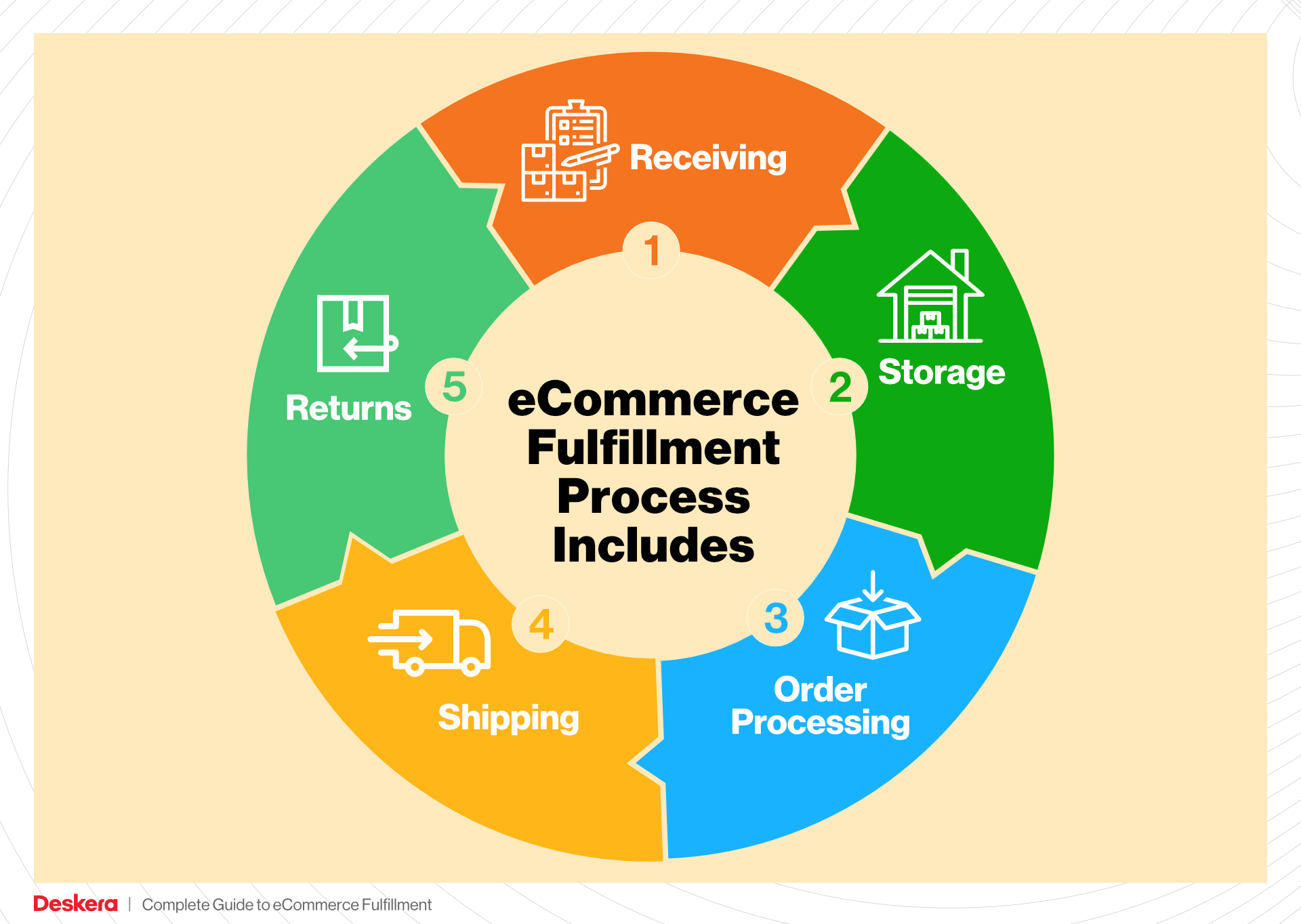
3. Order Picking
When a customer places an order, the next step is order picking. This involves selecting the correct items from storage based on the order details. Fulfillment centers often use pick lists—documents that outline the items to be picked, their locations, and quantities required.
Importance: Efficient order picking is essential for timely order fulfillment. Errors during this stage can lead to incorrect orders being shipped, which can harm customer relationships and result in costly returns. Implementing technology such as barcode scanners or pick-to-light systems can streamline this process and improve accuracy.
Key Term: Pick List – A document or digital list that details the items to be collected for fulfilling a customer’s order.
4. Order Packing
After items are picked, they proceed to the packing stage. During packing, products are securely placed in boxes or envelopes, and shipping labels are generated. This step is important for ensuring that items are protected during transit and that they arrive at the customer’s door in perfect condition.
Importance: Effective packing not only prevents damage during shipping but also enhances the unboxing experience for the customer. Well-packed orders reflect a brand’s commitment to quality and can lead to repeat business. Additionally, the packing process often involves checking items against the order to confirm accuracy before shipment.
Key Term: Packaging Materials – Supplies such as boxes, bubble wrap, and packing tape used to secure items for shipping.
5. Shipping & Delivery
The final step is shipping and delivery. Once packed, orders are handed over to shipping carriers for delivery to the customer. Fulfillment centers often work with multiple shipping providers to offer various options for customers, such as standard, expedited, or same-day shipping.
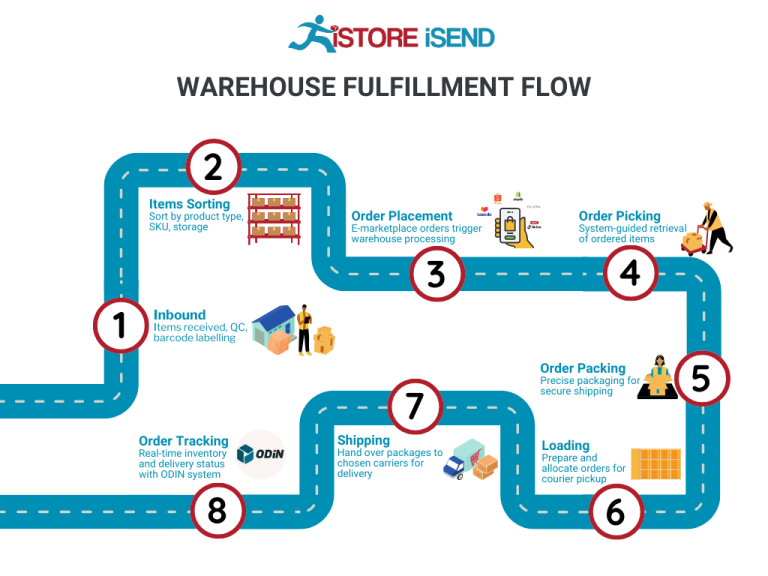
Importance: The shipping and delivery phase is critical as it directly impacts customer satisfaction. Timely and reliable delivery can enhance the overall shopping experience, while delays can lead to frustration and negative feedback. Businesses must track shipments and provide customers with updates to manage expectations effectively.
Key Term: Last-Mile Delivery – The final step of the delivery process where the product is transported from a distribution center to the customer’s doorstep, often considered the most critical and challenging segment of the shipping process.
In conclusion, the order fulfillment process is a multi-step operation that requires careful coordination and attention to detail at each stage. By understanding and optimizing each step—from receiving inventory to shipping and delivery—e-commerce businesses can enhance operational efficiency, improve customer satisfaction, and ultimately drive growth.
Comparing Fulfillment Models: In-House vs. 3PL vs. Dropshipping
Comparison of Fulfillment Models
| Model | Who Handles Inventory | Best For (Business Stage) | Key Advantage | Key Disadvantage |
|---|---|---|---|---|
| In-House Fulfillment | Business itself | Startups to small businesses | Greater control over inventory and processes | High overhead costs and operational complexity |
| Third-Party Logistics (3PL) | 3PL provider | Growing to medium businesses | Scalability and reduced operational burden | Less control over inventory and fulfillment speed |
| Dropshipping | Supplier | New businesses and niche markets | Low startup costs and minimal risk | Lower profit margins and reliance on supplier reliability |
In-House Fulfillment
In-house fulfillment is a model where the e-commerce business manages its own inventory and order processing. This approach allows for complete control over every aspect of the fulfillment process, from inventory management to shipping. For small businesses or startups, in-house fulfillment can provide a personalized touch that enhances customer service. Business owners can directly oversee the quality of packaging and delivery, which can lead to better customer satisfaction. However, this model comes with significant drawbacks, including high overhead costs. Maintaining warehousing space, hiring staff, and managing logistics can strain resources, particularly for businesses that are just starting out. Additionally, as order volume increases, the complexity of operations may lead to inefficiencies and potential errors in order processing.
Third-Party Logistics (3PL)
Third-party logistics (3PL) involves outsourcing fulfillment operations to specialized providers. These companies manage inventory storage, order processing, and shipping on behalf of the e-commerce business. This model is ideal for growing businesses looking to scale without the burden of managing logistics in-house. A key advantage of 3PL is its scalability; as order volumes rise, 3PL providers can accommodate increased demand without the need for the business to invest in additional infrastructure. Moreover, 3PL companies typically leverage advanced technology and established logistics networks, which can lead to faster and more reliable shipping. However, businesses must relinquish some control over their fulfillment processes, which can create challenges in communication and inventory management. Additionally, the costs associated with 3PL services can accumulate, especially if businesses do not carefully monitor usage and service levels.
Dropshipping
Dropshipping is a fulfillment model where the e-commerce retailer does not hold any inventory. Instead, when a customer places an order, the retailer purchases the item from a third-party supplier who ships it directly to the customer. This model is particularly appealing to new businesses and those operating in niche markets, as it requires minimal upfront investment and allows entrepreneurs to test various products without the risk of unsold inventory. The primary advantage of dropshipping is the low financial risk; businesses only pay for products after they are sold, reducing the need for significant capital investment. However, dropshipping is not without its challenges. Profit margins can be lower compared to other models due to supplier fees, and businesses are reliant on suppliers for inventory availability and shipping reliability. Delays or errors from the supplier can directly impact customer satisfaction and brand reputation, making effective communication and supplier selection crucial for success.
Conclusion
Choosing the right fulfillment model is a critical decision for e-commerce businesses, especially those looking to scale operations effectively. In-house fulfillment offers control and personalization but can be resource-intensive. Third-party logistics provide scalability and expertise, although they come with a trade-off in control. Dropshipping presents a low-risk entry point for new businesses but relies heavily on supplier dependability. Ultimately, the choice of fulfillment model should align with the business’s goals, resources, and growth strategy, ensuring that it meets customer expectations while facilitating efficient operations.
A Deep Dive into Amazon FBA: Pros, Cons, and Who It’s For
Understanding Fulfillment by Amazon (FBA)
Fulfillment by Amazon (FBA) is a service offered by Amazon that allows sellers to store their products in Amazon’s fulfillment centers. In turn, Amazon takes care of storage, packaging, shipping, and customer service for these products. This service is particularly appealing for e-commerce businesses looking to streamline their operations and reach a broader audience.
When a customer places an order for a product that is fulfilled by Amazon, the item is picked from Amazon’s inventory, packed, and shipped directly to the customer. Amazon also handles returns and customer inquiries related to those orders. This system allows sellers to focus on other essential aspects of their business while leveraging Amazon’s extensive logistics network.
How FBA Works
-
Setup: Sellers create an Amazon seller account and enroll in the FBA program. They can then list their products on the Amazon marketplace and send their inventory to Amazon’s fulfillment centers.
-
Storage: Once the inventory is received at the fulfillment center, it is stored until sold. Amazon uses advanced inventory management systems to keep track of stock levels.
-
Order Processing: When an order is placed, Amazon’s system automatically processes it. The item is picked from the shelf, packed, and shipped to the customer. Customers benefit from Amazon’s fast shipping options, including Prime delivery.
-
Customer Service and Returns: Amazon manages customer service for FBA orders, handling inquiries and returns on behalf of the seller. This allows sellers to offer a seamless customer experience without having to manage these interactions themselves.
-
Payment: After the sale is completed, the seller receives payment through Amazon, minus applicable fees.
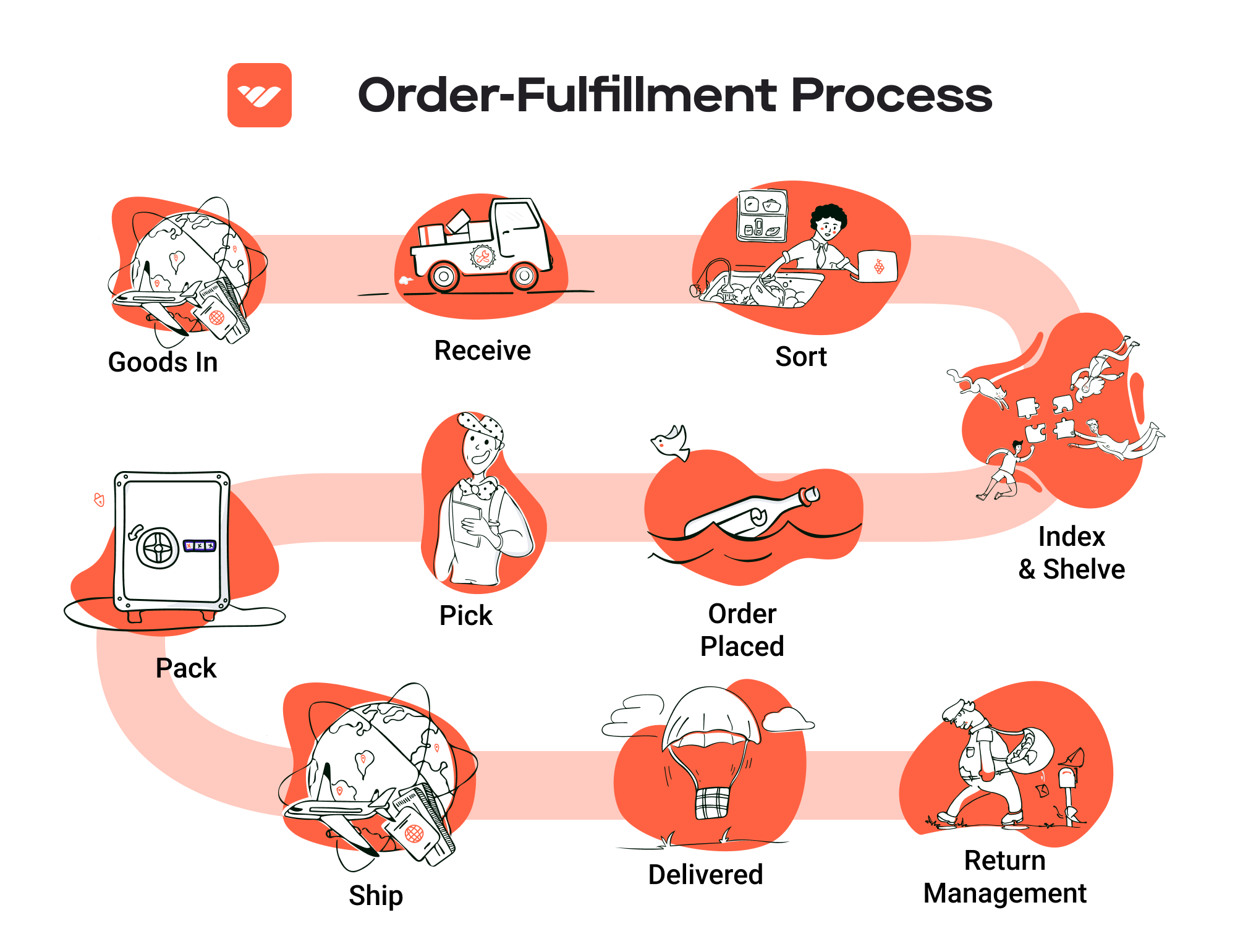
Pros of Fulfillment by Amazon
1. Prime Eligibility
One of the most significant advantages of FBA is that products become eligible for Amazon Prime, which provides access to a vast customer base willing to pay for fast shipping. Prime members are more likely to purchase items that offer this benefit, potentially increasing sales for sellers.
2. Customer Trust
Amazon is a trusted name in e-commerce, and products fulfilled by Amazon often carry the assurance of reliability and prompt delivery. This trust can lead to higher conversion rates as customers are more inclined to purchase products from sellers using FBA, knowing that Amazon will handle logistics.
3. Multi-Channel Fulfillment
FBA allows sellers to fulfill orders not only from Amazon but also from other e-commerce platforms, such as their own websites or eBay. This feature enables businesses to centralize their fulfillment processes, providing the benefits of Amazon’s logistics network across multiple sales channels.
4. Simplified Operations
By outsourcing fulfillment to Amazon, sellers can focus on core business activities, such as product development, marketing, and customer engagement, rather than spending time on packing and shipping orders.
5. Scalability
FBA supports growth as sellers can easily scale their operations without needing to invest in additional warehouse space, staff, or logistics infrastructure. Amazon can handle increased order volumes, allowing businesses to expand rapidly.
Cons of Fulfillment by Amazon
1. High Fees
While FBA offers many advantages, it comes with significant costs. Sellers must pay storage fees for inventory held in Amazon’s warehouses, as well as fulfillment fees for each item sold. These fees can add up, particularly for sellers with lower-priced items or slow-moving inventory.
2. Strict Inventory Rules
Amazon has specific rules regarding inventory management, including requirements for labeling and packaging. Sellers must adhere to these guidelines to avoid penalties or potential removal from the platform. This strictness can be challenging for businesses that are not accustomed to such regulations.
3. Commingling Risks
FBA products are often commingled, meaning that inventory from different sellers may be stored together. While this can streamline fulfillment, it also poses a risk. If a customer receives a defective product, it can be challenging to trace it back to the original seller, potentially harming the seller’s reputation.
4. Limited Control
Sellers relinquish control over the fulfillment process once they enroll in FBA. This lack of control can lead to issues such as shipping delays or incorrect orders, which can negatively impact customer satisfaction and the seller’s brand.
5. Inventory Replenishment Challenges
Sellers are responsible for monitoring their inventory levels and ensuring timely replenishment. If they fail to manage this effectively, they risk stockouts, which can lead to lost sales and decreased visibility on Amazon.
Who is FBA Best For?
Fulfillment by Amazon is particularly well-suited for:
-
Small to Medium-Sized Businesses: Companies that may not have the resources to manage their logistics can benefit significantly from FBA’s streamlined operations.
-
New Sellers: Entrepreneurs looking to establish their presence on Amazon can leverage FBA to take advantage of Amazon’s extensive customer base and logistics capabilities from the outset.
-
Businesses Seeking Growth: For sellers looking to scale quickly without the burden of managing logistics, FBA provides an efficient solution to handle increased order volumes.
-
Multi-Channel Sellers: Those who sell on multiple platforms can benefit from FBA’s multi-channel fulfillment capabilities, centralizing their logistics under one provider.
In conclusion, while Fulfillment by Amazon offers numerous advantages that can significantly simplify logistics and enhance sales, it also comes with challenges that sellers must navigate. Evaluating these pros and cons in the context of your business model will be crucial in determining whether FBA is the right fulfillment solution for you.
Core Services Offered by Fulfillment Centers
Inventory Management & Warehousing
Inventory management and warehousing are foundational services provided by fulfillment centers. This involves the systematic tracking and storage of products within a secure facility, ensuring that e-commerce businesses can maintain optimal stock levels without the burden of physical infrastructure.
What It Is: Fulfillment centers utilize advanced technology, such as inventory management systems and RFID tracking, to monitor stock levels in real-time. This allows businesses to efficiently manage their inventory, knowing exactly what is available and what needs to be reordered.
Benefits: The primary advantage of this service is the reduction of overhead costs associated with maintaining a physical warehouse. E-commerce businesses can avoid the expenses of leasing or owning a storage facility, as well as the costs related to utilities, security, and staffing. Additionally, with accurate inventory tracking, businesses can prevent stockouts and overstocks, leading to improved cash flow and better customer satisfaction due to the availability of products. This service also enables businesses to scale operations more effectively, as they can adjust their inventory levels based on demand without the complexities of managing physical space.
Pick and Pack Services
Pick and pack services are essential for the efficient processing of orders. This service involves selecting the correct items from the warehouse based on customer orders and packaging them appropriately for shipment.
What It Is: When a customer places an order, fulfillment center staff “pick” the items from their designated storage locations and then “pack” them into boxes or envelopes, ready for delivery. This process is often supported by technology that streamlines the picking process, such as barcode scanners and automated systems.
Benefits: The key benefit of pick and pack services is the speed and accuracy with which orders are fulfilled. Fulfillment centers can process orders much faster than most e-commerce businesses can manage in-house, enabling quicker delivery times. This is particularly important in today’s e-commerce landscape, where consumers expect rapid shipping. Additionally, by outsourcing this function, businesses can focus on core activities such as marketing and customer engagement, rather than getting bogged down in logistical details. This efficiency not only enhances customer satisfaction but also improves overall operational productivity.
Kitting and Assembly
Kitting and assembly services offer e-commerce businesses the ability to provide bundled products or customized kits without managing the complexities of assembly in-house.
What It Is: This service involves combining multiple products into a single package or kit, often tailored to specific customer needs or promotional offers. For example, a fulfillment center may assemble a gift basket or create a product bundle that includes complementary items.
Benefits: Kitting and assembly allow businesses to offer unique product offerings that can enhance customer appeal and drive sales. This service can also simplify inventory management, as it enables businesses to sell items in bundles rather than individually. From a cost perspective, outsourcing kitting reduces the need for additional labor and equipment, streamlining operations and lowering overhead costs. Furthermore, it allows for greater flexibility in marketing strategies, as businesses can easily create limited-time offers or seasonal bundles without significant upfront investment.
Returns Management (Reverse Logistics)
Returns management, often referred to as reverse logistics, is a crucial service offered by fulfillment centers that can significantly impact customer satisfaction and retention.
What It Is: This service involves handling the process of returns, from the moment a customer decides to return a product to the point where the item is restocked or disposed of. Fulfillment centers manage the entire reverse logistics process, including receiving returned items, inspecting them for quality, and determining whether they can be resold or need to be disposed of.
Benefits: Effective returns management is vital for maintaining customer trust and loyalty. By outsourcing this process to a fulfillment center, e-commerce businesses can ensure that returns are handled efficiently and professionally, reducing the burden on their internal teams. Moreover, streamlined returns processes can lead to faster refunds and exchanges, enhancing the overall customer experience. This service also provides valuable insights into return patterns, helping businesses identify issues with specific products and improve their offerings over time. By managing returns effectively, businesses can convert potential negative experiences into positive ones, ultimately driving repeat purchases and customer loyalty.
In conclusion, partnering with a fulfillment center provides e-commerce businesses with a suite of core services that enhance operational efficiency, reduce costs, and improve customer satisfaction. By leveraging these services, businesses can focus on growth and strategic initiatives while ensuring their logistics and fulfillment processes are handled by experts.
How to Choose a Fulfillment Partner: A 6-Point Checklist
Location & Warehouse Network
Importance:
The geographical location of your fulfillment partner’s warehouses can significantly impact your shipping times and costs. A partner with warehouses near your primary customer base can help ensure faster delivery and reduce shipping expenses.
Questions to Ask:
– Where are your warehouses located, and how many do you operate?
– What is your average shipping time to my target markets?
– Can you provide insights into your distribution network, including any regional hubs?
Technology & Integrations
Importance:
In today’s digital age, the ability to seamlessly integrate your e-commerce platform with your fulfillment partner’s technology is crucial. This ensures real-time inventory updates, order tracking, and efficient communication between your systems.
Questions to Ask:
– What technology do you use for inventory management and order processing?
– Are you compatible with my e-commerce platform (e.g., Shopify, WooCommerce, Amazon)?
– Can your system provide real-time tracking for both me and my customers?
– How do you handle data security and privacy?
Specializations (e.g., Cold Storage, Oversized Items)
Importance:
Different businesses have different needs based on their product types. If you sell perishable goods, oversized items, or require specialized handling, it’s essential to choose a partner with the appropriate capabilities.
Questions to Ask:
– Do you have specific facilities for special inventory types (e.g., cold storage, hazardous materials)?
– What experience do you have in handling products similar to mine?
– How do you ensure compliance with relevant regulations for specialized items?
Scalability & Capacity
Importance:
As your business grows, your fulfillment partner should be able to scale operations accordingly. A partner with flexible capacity can accommodate seasonal spikes in demand without sacrificing service quality.
Questions to Ask:
– What is your current capacity for handling orders, and how do you manage peak seasons?
– Can you provide examples of how you’ve scaled for other clients in the past?
– What measures do you have in place to ensure consistent service during high-demand periods?
Pricing and Contracts
Importance:
Understanding the cost structure and contract terms is vital for budgeting and avoiding unexpected expenses. A transparent pricing model helps you gauge the true cost of fulfillment.
Questions to Ask:
– Can you provide a detailed breakdown of your pricing structure (e.g., storage fees, pick and pack fees, shipping costs)?
– Are there any hidden fees I should be aware of (e.g., setup fees, minimum order fees)?
– What are the terms of your contracts? Are they flexible or long-term commitments?
– How often do you reassess pricing, and how will changes be communicated?
Customer Support & Reviews
Importance:
Effective customer support can make a significant difference in resolving issues quickly and maintaining a positive relationship. Additionally, reviews and testimonials provide insight into the partner’s reliability and service quality.
Questions to Ask:
– What customer support options do you offer (e.g., phone, email, live chat)?
– What are your response times for support inquiries?
– Can you provide references or case studies from current or past clients?
– How do you handle fulfillment errors, and what is your process for resolving issues?
Conclusion
Choosing the right fulfillment partner is a critical step in scaling your e-commerce business. By carefully evaluating each potential partner against this checklist, you can ensure that you select a provider that aligns with your operational needs, customer expectations, and long-term business goals. Taking the time to assess these factors will contribute significantly to the success of your logistics strategy and overall customer satisfaction.
Understanding Fulfillment Pricing: A Breakdown of Common Fees
Initial Setup Fees
Initial setup fees are typically charged when you first engage a fulfillment service. This fee covers the costs associated with integrating your e-commerce platform with the fulfillment center’s systems, ensuring that orders can be processed seamlessly. These fees can vary widely based on the complexity of the integration and the specific requirements of your business.
For example, if your online store uses a popular e-commerce platform like Shopify or WooCommerce, the integration might be straightforward and less expensive. Conversely, if your platform requires custom development or if you have a large volume of SKUs that need to be set up, the fees could be higher. It’s essential to ask for a detailed breakdown of what is included in the setup fee to avoid unexpected costs later.
Receiving Fees
Receiving fees are charged each time your inventory arrives at the fulfillment center. These fees cover the costs of unloading, inspecting, and storing your products. Typically calculated on a per-pallet or per-box basis, receiving fees can also vary depending on the type and volume of products being handled.
For example, if you send a large shipment of heavy goods, the receiving fee might be higher due to the additional labor and equipment required to handle those items. Some fulfillment centers may also charge extra for special handling, such as items requiring refrigeration or fragile goods. To get a clearer understanding of these fees, inquire about their pricing structure and any potential surcharges for specialized items.
Storage Fees (per pallet/bin)
Storage fees are charged for the space your inventory occupies within the fulfillment center. These fees can be assessed on a monthly basis and are often calculated per pallet or per bin. The total cost will depend on the volume of your products and the duration they remain in storage.
Typically, storage fees can vary based on the time of year. For instance, many fulfillment centers charge higher rates during peak seasons, such as the holidays, when demand for storage space increases. It’s advisable to discuss with your fulfillment provider how they calculate storage fees, including any minimums or caps on charges, as this can significantly impact your overall costs.
Pick & Pack Fees (per item/order)
Pick and pack fees are charged for the labor involved in retrieving items from storage and preparing them for shipment. These fees are usually calculated per item or per order and can vary based on the complexity of the order.
For instance, if an order consists of multiple items that require different packaging or special handling, the pick and pack fee might be higher than for a straightforward single-item order. Additionally, some fulfillment centers may offer tiered pricing structures, where the cost per item decreases as order volume increases. To manage these costs effectively, consider streamlining your inventory and order processes to minimize complexity and optimize efficiency.
Shipping Fees
Shipping fees are incurred whenever your products are sent out from the fulfillment center to your customers. These fees can vary significantly based on several factors, including the shipping carrier, the destination, package dimensions, and delivery speed. Most fulfillment centers provide multiple shipping options, allowing you to choose between standard, expedited, or even same-day delivery services.
It’s crucial to understand how your fulfillment provider calculates shipping fees, as they may charge either a flat rate or a variable rate based on weight and distance. Additionally, some providers may offer discounts for high-volume shipping, which can help you save costs. Always ask for a detailed shipping fee structure and consider negotiating terms based on your projected order volume.
Tips for Getting an Accurate Quote
To ensure you receive an accurate quote from a fulfillment center, consider the following tips:
-
Be Transparent: Provide detailed information about your business model, product types, and order volume. The more data you share, the more accurate the quote will be.
-
Request a Comprehensive Breakdown: Ask for a detailed list of all potential fees, including any additional costs that could arise during peak seasons or for special handling.
-
Compare Multiple Providers: Don’t settle for the first quote you receive. Compare offers from several fulfillment centers to find the best fit for your needs.
-
Negotiate Terms: Many fulfillment centers are open to negotiation, especially if you can demonstrate a high volume of business. Discuss potential discounts or more favorable terms based on your projected growth.
-
Evaluate Additional Services: Inquire about any value-added services that could streamline your operations, such as inventory management or returns processing, which could influence your overall costs.
By understanding these common fees and carefully evaluating potential fulfillment partners, you can make informed decisions that support your business’s growth and efficiency.
Frequently Asked Questions (FAQs) about Fulfillment
1. What is an Amazon Fulfillment Center (Ord4)?
An Amazon Fulfillment Center, like Ord4, is a large-scale warehouse where Amazon stores products sold by third-party sellers. When a customer places an order, the fulfillment center picks, packs, and ships the product directly to the customer, streamlining the logistics process for sellers and enhancing delivery speed and reliability for customers.
2. How does the fulfillment process work at Amazon Fulfillment Centers?
When an order is placed, the fulfillment center retrieves the item from inventory, packages it according to Amazon’s standards, and ships it using their logistics network. This process is automated and integrated with Amazon’s technology, allowing for real-time updates and efficient handling of orders.
3. What is the difference between a warehouse and a fulfillment center?
A warehouse is primarily used for long-term storage of goods, while a fulfillment center focuses on processing and shipping orders quickly. Fulfillment centers provide additional services such as picking, packing, and shipping, which are not typically offered by traditional warehouses.
4. What are the benefits of using Amazon Fulfillment Centers for my e-commerce business?
Using Amazon Fulfillment Centers allows businesses to leverage Amazon’s extensive logistics network, resulting in faster shipping times, reduced operational burdens, and improved customer satisfaction. Sellers can focus on marketing and growing their brand instead of managing order fulfillment.
5. How much do fulfillment services cost at Amazon Fulfillment Centers?
Costs vary based on factors such as storage fees, order processing fees, and shipping costs. Typically, sellers pay a monthly fee for storage of their inventory and a per-order fee for fulfillment services. It’s essential to review Amazon’s fee structure to estimate your total costs accurately.
6. What is a 3PL, and how does it relate to Amazon Fulfillment?
A 3PL, or third-party logistics provider, is a company that offers outsourced logistics services, including fulfillment. Amazon’s fulfillment services can be considered a form of 3PL, as they handle all aspects of order processing for sellers, allowing them to benefit from Amazon’s resources and technology.
7. Can I customize my packaging when using Amazon Fulfillment Centers?
Customization options are limited at Amazon Fulfillment Centers. While you can choose standard packaging, adding personal touches like thank-you notes or branded packaging typically isn’t supported. If customization is essential, consider using a fulfillment service that offers more flexibility.
8. How do I track my inventory levels at Amazon Fulfillment Centers?
Sellers can monitor their inventory levels through the Amazon Seller Central dashboard. This platform provides real-time data on stock levels, sales trends, and alerts for low inventory, helping you manage replenishment effectively.
9. What happens if there’s an error in order fulfillment?
If an order is fulfilled incorrectly, the seller is responsible for addressing the issue directly with the customer. Amazon provides tools and support for managing these situations, but the seller must ensure customer satisfaction and handle any returns or exchanges.
10. How can I ensure my products are eligible for Amazon Prime through fulfillment?
To qualify for Amazon Prime, products must be stored and shipped from Amazon Fulfillment Centers. Sellers need to enroll in the Fulfillment by Amazon (FBA) program, which automatically makes eligible products Prime-ready, allowing them to tap into Amazon’s vast Prime customer base.
Conclusion: Is Outsourcing Fulfillment the Right Move for Your Business?
Assessing the Benefits of Outsourcing Fulfillment
Outsourcing fulfillment can be a transformative strategy for e-commerce businesses looking to scale efficiently. By leveraging a fulfillment service, you can save valuable time that would otherwise be spent on managing logistics. This allows you to focus on core business activities such as marketing, product development, and customer engagement. The speed at which fulfillment centers process and ship orders often surpasses in-house capabilities, enhancing customer satisfaction and loyalty.
Scalability is another significant advantage of partnering with a fulfillment provider. As your business grows, so too do the complexities of managing increased order volumes. Fulfillment centers are equipped to handle fluctuating demands, enabling you to expand your product range without the burden of additional infrastructure or staffing. This flexibility is crucial in today’s fast-paced e-commerce landscape, where consumer expectations for quick delivery are higher than ever.
Moreover, fulfillment services bring expertise and advanced technology to the table. Many providers, such as Amazon Fulfillment Centers, utilize cutting-edge logistics systems and best practices honed from years of experience. This not only ensures efficient operations but also minimizes errors, allowing you to deliver a seamless shopping experience to your customers.
Choosing the Right Partner
However, the success of outsourcing fulfillment hinges on selecting the right partner. A thorough evaluation of potential fulfillment providers is essential; consider factors such as their location, service offerings, integration capabilities, and track record with businesses similar to yours. The right partner can be a catalyst for growth, while a poor choice may hinder your business and damage customer relationships.
Call to Action
To determine if outsourcing fulfillment is the right move for your business, conduct a comprehensive audit of your current shipping process. Evaluate your operational bottlenecks, customer feedback, and growth aspirations. This strategic assessment will provide clarity on whether a fulfillment partner can enhance your logistics and support your scaling efforts. Embrace the opportunity to optimize your operations and elevate your e-commerce success.
Important Disclaimer
⚠️ Important Disclaimer
The information in this guide is for educational purposes. Fulfillment services, pricing, and platform features change frequently. Always conduct your own due diligence and consult with providers directly before making business decisions.
